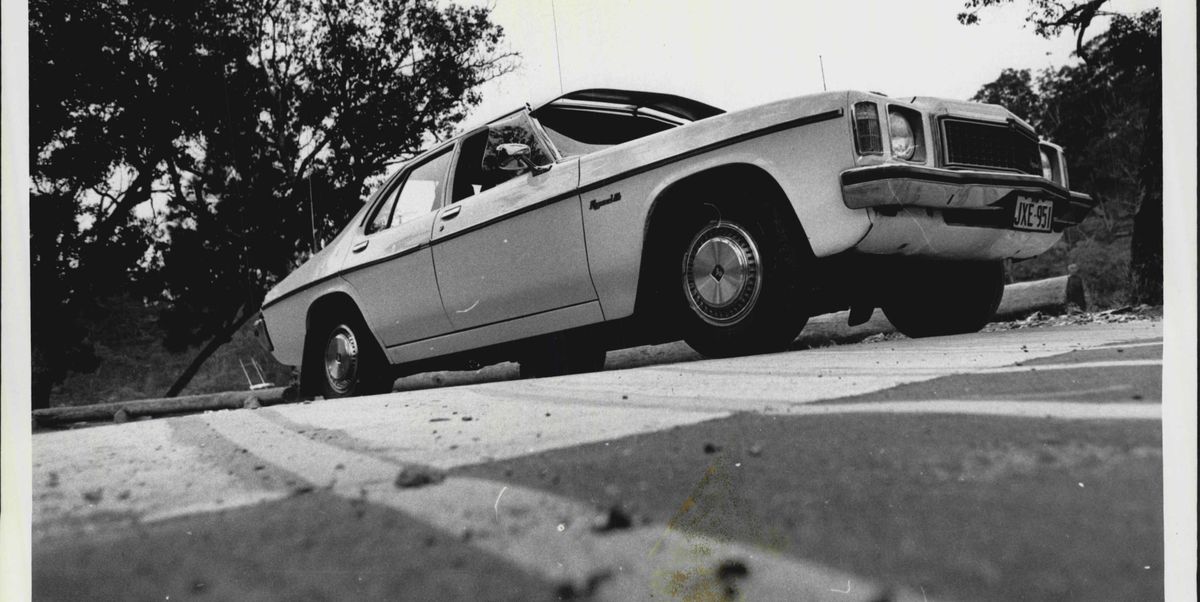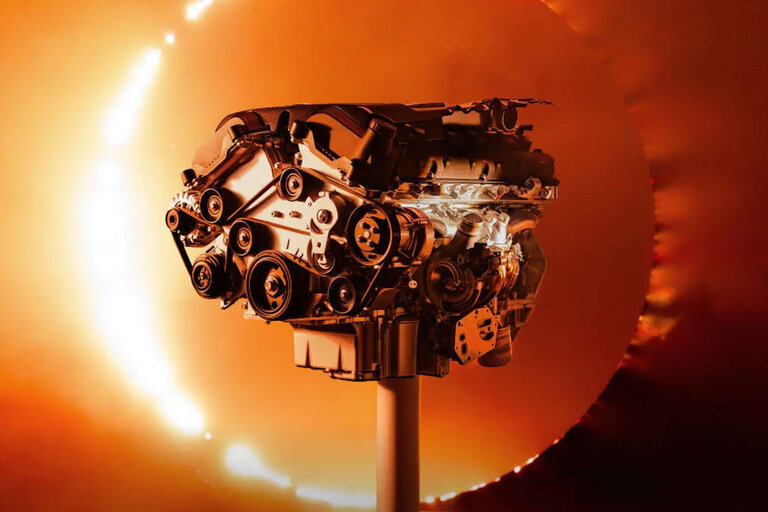
In July of 1942, Robert Oppenheimer left his meetings in California and headed via train for Michigan. There, on the shores of Lake Otsego dotted with holiday cabins, a fierce discussion and debate took place: Could the test of a nuclear weapon set fire to the atmosphere?
Oppenheimer’s opposite was Arthur Holly Compton, a renowned Nobel Prize–winning physicist. You will not see him portrayed in Christopher Nolan’s just-released Oppenheimer, but he was one of the scientist’s closest friends. It was Compton who put Oppenheimer in charge of the Manhattan Project and who years later defended him against bogus charges of Communism. And if you’re wondering what all of this has to do with cars, well, Arthur Holly Compton also invented the modern speed bump.
A Low-Tech, High-Annoyance Solution
“I am become Minor Inconvenience, scraper of splitters” doesn’t have quite the same impact as a Vishnu quote from the Bhagavad Gita. Still, as a historical footnote, it’s a curious bit of trivia that a man at the very center of the dawn of the nuclear age should also be responsible for something so seemingly low-tech.
Born in Ohio in 1892, Arthur Compton was born into a family of academics (his brother would later be president of MIT). He began studying physics, specifically the behavior of X-rays. In 1922 he discovered Compton Scattering, which, without going into great detail, essentially practically proved the accuracy of Albert Einstein’s theories about light photons acting as a particle.
Compton received his Nobel Prize in 1927, shared with a pair of German scientists—one of whom would invent the Geiger counter. That same year he met J. Robert Oppenheimer, then a newly minted Ph.D.
In 1942, Compton placed a grave responsibility on Oppenheimer’s shoulders by appointing him the top theorist of the Office of Scientific Research and Development. When the army took over that summer, Compton pressed for Oppenheimer to remain in charge of the Manhattan Project.
Compton’s work was a huge part of the project. After Japan’s attack at Pearl Harbor, he had already pulled plutonium research together at the University of Chicago, creating the secretive Metallurgical Laboratory. One year after Pearl Harbor, the Met Lab team achieved a sustained nuclear reaction in the world’s first reactor.
Not Present at the Creation
Compton was not present at the New Mexico test, though Oppenheimer had invited him in super-duper secret code: “Any time after the 15th would be a good time for our fishing trip.” Compton’s work in Chicago kept him from attending, but he received a call a few weeks later.
“You’ll be interested to know that we caught a very big fish.”
It’s likely that this simple code was a reference to time spent at Lake Otsego. However, it should also be pointed out that both Oppenheimer and Compton had children at this point, so neither would have been above a fishin’/fission Dad Joke.
After receiving the Medal for Merit for his work on the Manhattan Project, the highest U.S. civilian decoration at the time, Compton returned to university life. Here, as Chancellor of Washington University in St. Louis, he was annoyed at motorists speeding up and down the main thoroughfare of campus. So he did something about it.
“Holly humps,” as they were first called, were installed on what is now Hoyt Drive in the spring of 1953. As you’d expect, Compton did a number of rigorous calculations to determine the correct angles and height, concluding that a car traveling at 20 mph would experience just 0.4g, but one hitting 50 mph would be subject to four times the force of the gravitational constant.
“The Wheels Will Leave the Ground”
“That is,” he wrote in his notebook, “the wheels will leave the ground.” I’ll say they will. Probably leave the car as well.
You have to imagine that the first miscreant in a flathead V-8 Ford hitting one of these things must have put a head-shaped dent in the roof. But eventually speed bumps were everywhere throughout the world, even getting their own names in different countries. In the U.K. they are known as sleeping policemen.
There are also gentler speed tables for traffic calming, elevated crosswalks, and even some hydraulic Swedish speed-activated bumps. Critics note that regular speed bumps slow all traffic—including emergency vehicles—and the thump of tires and suspension can increase sound pollution.
These drawbacks do not really compare to other inventions with potential foibles like, say, the complete extinction of life via horrific heat and irradiation. We will probably never get a Christopher Nolan movie about Compton and his speed bumps. But next time you’re jostled while entering a parking lot or rolling down a side street, remember that the inventor of the speed bump also helped create humanity’s most destructive weapon.

Contributing Editor
Brendan McAleer is a freelance writer and photographer based in North Vancouver, B.C., Canada. He grew up splitting his knuckles on British automobiles, came of age in the golden era of Japanese sport-compact performance, and began writing about cars and people in 2008. His particular interest is the intersection between humanity and machinery, whether it is the racing career of Walter Cronkite or Japanese animator Hayao Miyazaki’s half-century obsession with the Citroën 2CV. He has taught both of his young daughters how to shift a manual transmission and is grateful for the excuse they provide to be perpetually buying Hot Wheels.
#Oppenheimer #Speed #Bump #Unexpectedly #Linked
Source link






